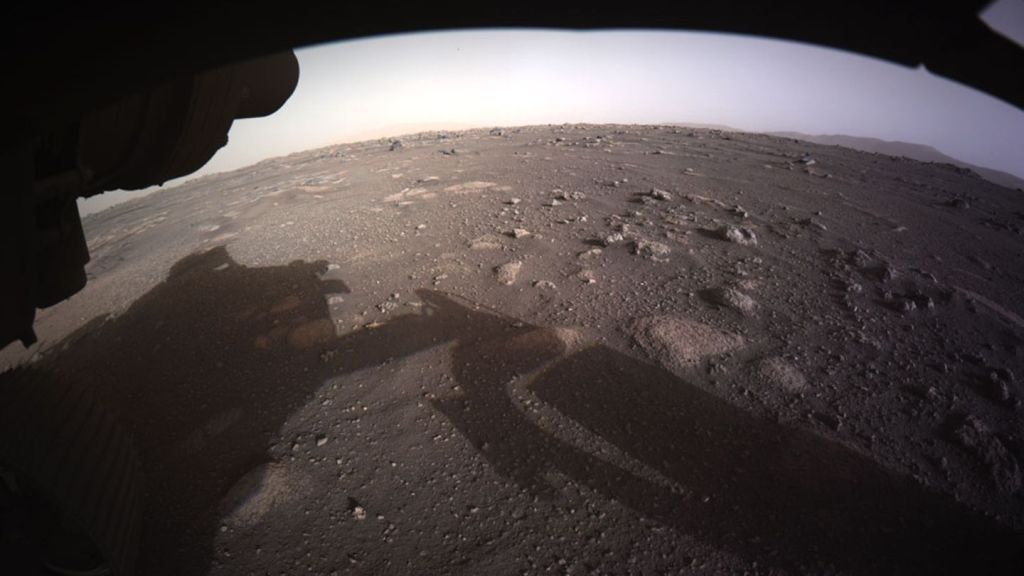A pair of astrophysicists have proposed a new strategy for searching for intelligent extraterrestrial life: point our telescopes in the direction where, if life exists, it may have already found us.
“We’re mostly interested in the answer to the question: where in the sky are they?” said René Heller, an astrophysicist at the Max Planck Institute for Solar System Research in Göttingen, Germany, and the co-author of a paper detailing this strategy published online Tuesday in Astrobiology.
Videos by VICE
One of the ways we search for Earth-like planets elsewhere in the universe is through a technique called transit observation: We basically watch to see the planet cross between us and its star, which we observe as a tiny decrease in that star’s brightness. We can use that to determine the size of the planet and even make some observations about its atmosphere. Transit observation is an effective technique that has led to the discovery of thousands of exoplanets, so it got Heller and his co-author, Ralph Pudritz, thinking: maybe we’re not the only ones to have come up with it.
Heller and Pudritz calculated where in the universe other intelligent life would have to be in order to see the Earth transiting in front of the Sun. They call this the Earth transit zone, or ETZ. Heller and Pudritz propose that we reverse engineer the transit observation technique to inform where to begin our search for intelligent extraterrestrial life by focusing on parts of the universe within the ETZ. The thinking is that if they can see us, and they’re as advanced or more than we are, then they might be sending us signals and trying to get in touch.
“Those who see us transiting the Sun have a higher probability to discover the Earth is habitable or even that it is inhabited,” Heller told me over the phone. “If there’s a random distribution of potential observers out there, then those who are in this fan—in the Earth’s transit zone—they have a higher chance of detecting us and reaching out to us.”
Search for extraterrestrial life (or SETI) projects have been conducted since the 1960s, but researchers are currently planning a new, massive, strategic SETI project called the Breakthrough Initiative. It’s an effort promoted by Stephen Hawking and backed by Russian billionaire Yuri Milner that will use radio telescopes on Earth to “listen” for signals from intelligent life elsewhere in the universe.
“If we can never find any evidence, it’s easier to assume they’re not there.”
The thing is, the universe is really big, so we need to think carefully about where we want to begin that search. Heller and Pudritz believe their strategy would be a great approach to solving this dilemma of where to start. As a starting point, they even included in their paper a table of 82 stars within the ETZ that could have life-supporting planets. There are lots of different kinds of signals we can look for—from laser pulses to possible megastructures—and now this paper offers us a prudent place to start the search.

Some of the stars Heller and Pudritz highlighted as good candidates to start the search. Image: Astrobiology
Of course, whenever thinking about the search for intelligent extraterrestrial life, one problem always emerges: the Fermi paradox. This is the contradiction between our estimates about how much life ought to be in the universe and the reality that we still haven’t found any evidence of life outside of Earth. Heller said it’s a big question, but that there are lots of explanations as to why we have yet to make first contact.
“It could actually be that any level of technology, as advanced as you want, still is not enough to do interstellar travel,” Heller said. “Or maybe there’s just no one out there who could travel.”
Heller also referenced a theory that alien life surrounds us, but it is somehow able to hide to be undetectable to us so that we may never find it.
“I would argue if that’s true and we can never find any evidence, it’s easier to assume they’re not there. It just evokes too many variables, for humans anyway,” Heller said.
And that’s part of the problem. If we accept the probability of life elsewhere in the universe, we also have to accept that there are near infinite other manifestations of that life, and that we might not know how to recognize or perceive it. Our search for and understanding of life in the universe is limited to our own experience of it, which is why reverse-engineering transit observation seems like such a good idea. It could be that extraterrestrial life would never consider looking for us the way we’re looking for them, but it’s what we know, so it’s one place to start.
Either way, we’re soon going to be looking for glimmers of intelligent life from far away stars, and we now have our first suggested roadmap.



